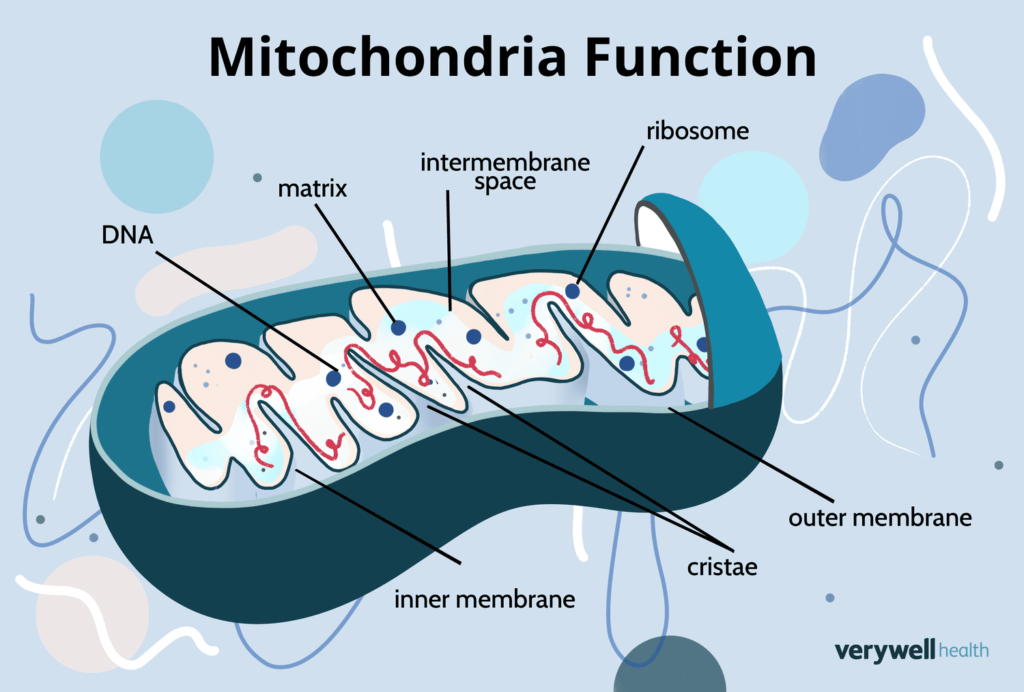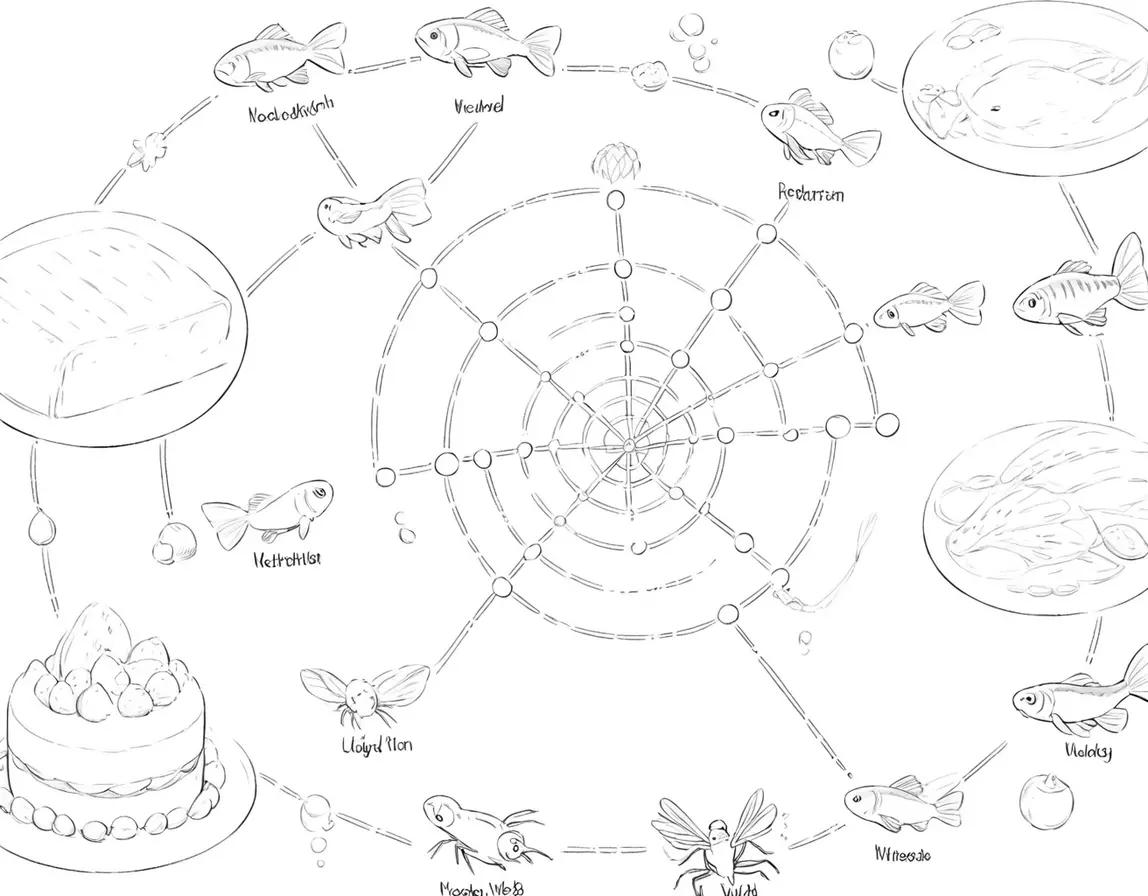
Introduction:
Mitochondria, often referred to as the powerhouse of the cell, are remarkable organelles with a pivotal role in cellular energy production and various metabolic processes. This comprehensive exploration aims to delve into the intricate structure, functions, and significance of mitochondria in the realm of cellular biology.
Mitochondrial Structure:
Outer Membrane:
- Composition: The outer membrane is permeable and contains porins, allowing the passage of small ions and molecules.
- Function: Acts as a protective barrier, separating the mitochondrion from the cytoplasm.
Inner Membrane:
- Composition: Highly impermeable due to the presence of proteins forming complexes involved in energy production.
- Cristae: Invaginations of the inner membrane that increase its surface area for enhanced ATP production.
Matrix:
- Composition: A semi-fluid substance containing enzymes, mitochondrial DNA, ribosomes, and other molecules.
- Function: The matrix is the site of various biochemical reactions, including the Krebs cycle.
Mitochondrial Functions:
ATP Production:
- Oxidative Phosphorylation: Occurs in the inner mitochondrial membrane, involving the electron transport chain and ATP synthase.
- Electron Transport Chain (ETC): Electrons are transferred through a series of protein complexes, generating a proton gradient.
- ATP Synthase: Uses the proton gradient to synthesize ATP from ADP and inorganic phosphate.
Krebs Cycle (Citric Acid Cycle):
- Location: Takes place in the mitochondrial matrix.
- Process: Acetyl-CoA derived from the breakdown of nutrients enters the cycle, producing NADH and FADH2, which contribute to the electron transport chain.
Beta-Oxidation:
- Location: Involves the breakdown of fatty acids in the mitochondrial matrix.
- Process: Fatty acids are broken down into acetyl-CoA, contributing to the Krebs cycle for ATP production.
Regulation of Apoptosis:
- Release of Cytochrome c: Mitochondria play a crucial role in apoptosis (programmed cell death) by releasing cytochrome c, triggering downstream apoptotic events.
Calcium Regulation:
- Uptake and Release: Mitochondria regulate cellular calcium levels by actively taking up and releasing calcium ions.
- Role in Signaling: Calcium signaling influences various cellular processes, including metabolism and apoptosis.
Mitochondrial DNA (mtDNA):
Unique Characteristics:
- Circular DNA: Unlike nuclear DNA, mitochondrial DNA is a circular molecule.
- Maternal Inheritance: In most species, mitochondria are inherited exclusively from the mother.
Replication:
- Independent Replication: Mitochondria replicate independently of the cell cycle.
- Replication Machinery: Mitochondria have their own machinery for DNA replication.
Genetic Code:
- Variations: Mitochondrial DNA exhibits variations among individuals, contributing to genetic diversity.
- Limited Coding: Mitochondrial DNA encodes a small number of essential genes, with the majority of proteins being encoded by nuclear DNA.
Origin and Evolution:
Endosymbiotic Theory:
- Hypothesis: Proposes that mitochondria originated from a symbiotic relationship between a primitive eukaryotic cell and an ancestral prokaryotic organism.
- Evidence: Similarities in DNA, structure, and replication processes between mitochondria and bacteria support the endosymbiotic theory.
Evolutionary Adaptations:
- Integration with Host Cells: Mitochondria have evolved to integrate seamlessly with host cells, forming a mutually beneficial relationship.
- Genetic Integration: Over time, many mitochondrial genes have been transferred to the nuclear genome.
Mitochondrial Disorders:
Genetic Mutations:
- Impact on ATP Production: Mutations in mitochondrial DNA can lead to impaired ATP production.
- Heteroplasmy: Presence of both normal and mutated mitochondrial DNA in a cell, influencing the severity of disorders.
Clinical Manifestations:
- Variable Symptoms: Mitochondrial disorders can manifest in a variety of ways, affecting organs with high energy demands, such as the brain and muscles.
- Neurological Implications: Conditions like Leigh syndrome and mitochondrial encephalopathy often have neurological manifestations.
Diagnostic Challenges:
- Heterogeneity: The heterogeneity of mitochondrial disorders poses challenges in diagnosis and treatment.
- Advancements in Diagnosis: Molecular techniques and genetic testing have improved the accuracy of diagnosing mitochondrial disorders.
Mitochondria stand as exemplars of the intricate symbiosis between cellular structures and their pivotal role in sustaining life. From their unique structure to the multifaceted functions, mitochondria contribute significantly to cellular processes and the overall functioning of living organisms. The exploration of mitochondrial DNA and their evolutionary origin sheds light on the interconnectedness of life.
Understanding mitochondria is not merely a biological pursuit but holds implications for health and medicine, offering insights into disorders and potential therapeutic avenues.
As research continues, the significance of mitochondria in the grand tapestry of life becomes increasingly apparent, affirming their status as the powerhouse and orchestrators of cellular vitality.


















